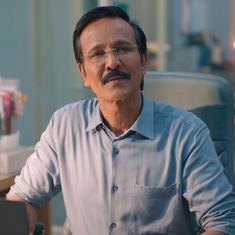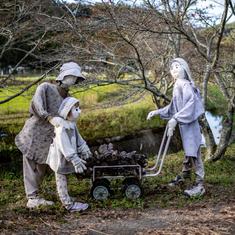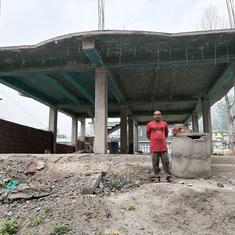What do a radical caste reformer and vernacular sexologist, a woman Ayurvedic practitioner, a cosmopolitan advocate of Hindu self-strengthening and an early Communist interested in Utopian thought, have in common? These are the deeply intriguing figures around which leading historian Charu Gupta has woven her compelling new social history of early 20th century north India in her new book Hindi Hindu Histories: Caste, Ayurveda, Travel, and Communism in Early Twentieth Century India.
Life histories, particularly multiple life histories told in parallel, have proved a very effective way of bringing India’s complex states and societies to life. Richard Eaton’s A Social History of the Deccan, 1300-1761: Eight Indian Lives did just this for the early modern history of Maharashtra. Most recently, Leela Prasad’s The Audacious Raconteur Sovereignty and Storytelling in Colonial India explores the social and ethical worlds of a heterogeneous group of story-tellers in colonial south India. Drawing on their own regional traditions and personal experiences, these storytellers flaunted their real creative freedom from colonialism’s wooden attempts to assert its cultural dominance.
The ‘Hindu’ religious culture
Charu Gupta’s study shares some of this methodology but with a key difference. It was within the booming world of Hindi popular print that all four of her figures found their platforms for advocacy, political connections and commercial opportunities. These were not “tellers of stories”, but rather prolific writers in many genres of Hindi nonfiction: life histories, popular journalism, travel accounts, didactic texts, intellectual speculation, educational guides of many kinds, commercial promotions, personal correspondence. Much of their writing flowed from their practical activities and the local institutions they took the lead in developing.
Very different in their interests and social positioning, all four nonetheless worked within the broad sphere of “Hindu” religious culture. Not at the centre of the political mainstream. They were essentially “vernacular” intellectuals and activists, concerned for the most part with issues affecting the daily lives of their readers. They also shared a deep interest in the many meanings of “freedom”, as the colonial state withdrew from some areas of social life, as forms of gender, caste and class radicalism challenged older domestic oppressions, and as Hindi popular print opened many new conduits for communication. What, in this context, might freedom mean within the home, in personal relationships, bodily norms, access to new knowledges, the ability to imagine new futures?
Gupta selects her figures – Santram BA, Yashoda Devi, Swami Satyadev Parivrajak and Satyabhakt – for what their lives can tell us, in turn, about caste, gender, religion and class as these were debated in the world of Hindi print. Strikingly, none limited their activities to a single domain. From a village artisan family of petty traders in Punjab’s Hoshiarpur district, Santram BA (1887-1988) pursued a career as a radical Shudra caste reformer. He wore his educational qualification as an open riposte to the caste elites who belittled his work as an enterprising young journalist and social reformer. He fought hard to establish a liberal middle ground between the Arya Samaj and the Dalit-oriented Ad Dharma movement, between the Hindu reformism of Gandhi and Ambedkar’s absolute repudiation of caste.
But his search for freedom in a new kind of anti-caste self-hood also took him into the domain of the home, the family and intimate personal relationships. Rejecting Arya Samaj-ist advocacy of brahmacharya for young men, he celebrated the freedom that women and men alike might find in the natural pleasure of sexual relationships. Marie Stopes and the Sanskrit sex classics alike furnished him with material for what became a flourishing vernacular sexology, offered to Hindi readers in magazine articles, letters, advice manuals and translations from “authoritative” western works. Undeterred by scandalised local conservatives and official threats that his “obscene” writings would be censored, he continued to publish, projecting his ethical ideals in the domain of sexual relations as part of his wider attempt to think about a society free from all forms of oppression.
Gupta’s other figures equally ranged across domains of culture, politics and the home in unexpected ways. Women in the early 20th century very rarely established themselves as Ayurvedic practitioners, and few offered themselves as specialists in women’s health. From a Brahman family of Ayurvedic vaids, the redoubtable Yashoda Devi (1890-1942) moved into this gap in the market. Alongside her own practice in Allahabad, she developed a hugely successful commercial career as an author of Ayurvedic guides to health and entrepreneur despatching her herbal remedies to readers across the subcontinent and beyond.
She also found a role as a Zenana agony aunt, offering profusely illustrated manuals of sexual and emotional guidance to her Hindi readership, frequently attracting severe disapproval for her frank advice. A natural extension to this work lay in projecting new ways of thinking about the educated wife’s role as properly the “vaid of the home”. With the aid of Yashoda Devi’s attractively marketed cookbooks and manuals of home remedies, the housewife could share her knowledge, and so forge sisterly links with housewives in other families. She could also play her role in protecting the health of the nation, imperilled by the loss of its indigenous medical and culinary traditions.
If Yashoda Devi drew on indigenous knowledge traditions to develop her vernacular therapies for a new Hindi-speaking consumer public, Swami Satyadev Parivrajak (1879-1961) took a consciously cosmopolitan approach. His prolific travel writing in Hindi grew out of his years of curious journeying, often on foot, across Europe and North America. These years enabled him to discover his love for Hindi, and a deep admiration for the social freedom and emphasis on bodily beauty that he observed on his travels. As he travelled through the Europe of the 1930s, though, it was Adolf Hitler’s political project and the Nazi celebration of the perfect male body that most caught his imagination.
What Swami Satyadev drew from this, however, was not an emphasis on the new freedom to be found in bodily pleasures, but rather its opposite: an enthusiastic celebration of himself as a Hindu ascetic, his virile powers enhanced by celibacy. Very much in line with other late colonial Hindu nationalists, he saw liberty rather in terms of Hindu sanghatana, and freedom from the taint and political threat posed by Muslims in India’s body politic.
More self-consciously intellectual in his approach, the journalist Satyabhakt (1896-1985) was in the 1920s a pioneer of Communist organising in north India. But his insistence that Marxism needed an essentially Indian ethical foundation led to deep disagreements with the movement’s Anglophone elites. Like Santram BA, Satyabhakt found himself caught between the hostility from these local elites and the periodic colonial proscription of his books.
Yet he pursued his advocacy of dialogue between Hinduism and Communism, finding in the Hindu-inflected Utopian vision of “Ram Rajya” a means of conveying what an ideal Communist society in India might actually look like. Like the other figures introduced in Gupta’s book, Santram now looks very much a pioneer, although now celebrated for his championship of Dalit causes rather than for his writings in the field of sexology.
Experiments with societal freedom
These fine-grained studies of lesser-known vernacular intellectuals and practitioners illuminate a whole range of important questions. Most immediately striking was their sheer inventiveness, as they sought ways to accommodate their own “Hindu” life experience to the forces of colonial modernity, globalisation, the emergence of new social norms and knowledges. Audacity also marked their work, as they disregarded official colonial as well as conservative Hindu disapproval of their experiments with new conceptions of personal and societal freedom.
Significantly, their lives demonstrate that “Hinduism” in this period was neither a monolith nor set on some inevitable trajectory towards the Hindutva of our own times. Rather, Hindu religious culture was fluid and capacious, capable of supporting many different ways of construing encounters between tradition and modernity, the global and the local. Far from promoting a homogeneous “omnibus Hinduism”, as an older generation of historians have suggested, Gupta also shows that the burgeoning of Hindi popular print actually ensured this continued vitality and elasticity of Hindu religious culture.
But perhaps the most striking insight that flows from Gupta’s indispensable study may be that these qualities operated most powerfully in the imagined and practical space of the home. The home was not only a place of repression, although north India’s middle-class Hindu homes were certainly sometimes that. They were also places of possibility, where vernacular intellectuals brought the energies of Hindi popular print to explore new understandings of the self and the body, new possibilities for dignity and equality in private life and new visions of societal freedom, often with results that now look very much ahead of their time.
Following on from this key insight, Gupta’s readers will certainly be left wanting to know more about the consumers of Hindi print. Did family members discuss what they read? How did caste and gender inflect reading practices? In what ways did the texts of Gupta’s vernacular intellectuals circulate, and what new social networks they did help to forge? Such questions are notoriously difficult for the historian to answer, and it is undoubtedly the mark of every good book that leaves its readers wanting more. We can only hope, as we enjoy this present absorbing work, that Gupta might in the future turn her expertise to these wider contexts for the important vernacular intellectuals presented here.
Polly O’Hanlon is a professor Emeritus of Indian History and Culture at the Faculty of Asian and Middle East Studies at the University of Oxford.

Hindi Hindu Histories: Caste, Ayurveda, Travel, and Communism in Early Twentieth Century India, Charu Gupta, Permanent Black in association with Ashoka University.










